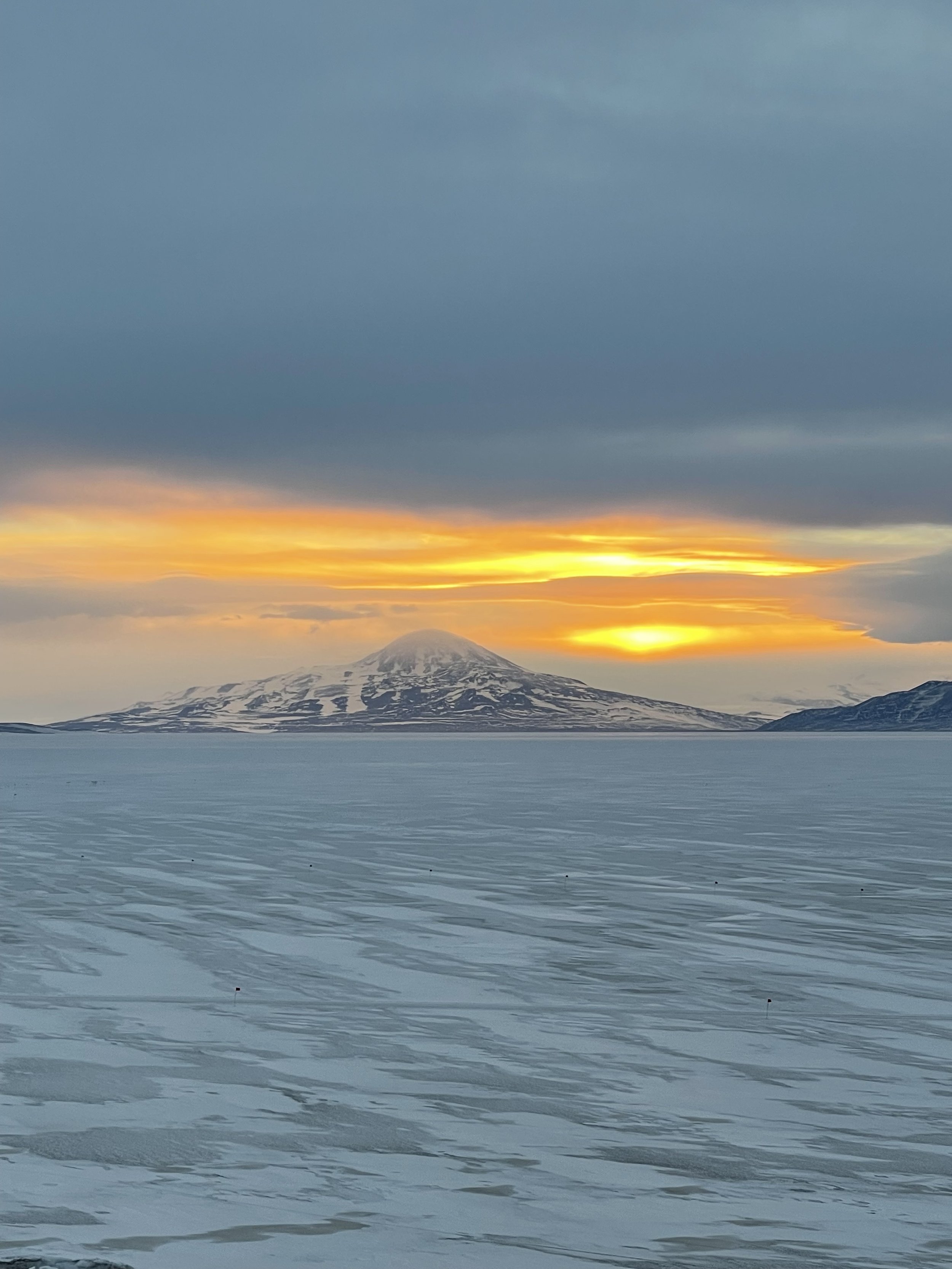The Frozen Continent
21/09/2021
My adventure to the frozen continent began when I flew from Denver to San Francisco, where I would go into four days of quarantine and anxiously await my Covid test results. If you test positive, you are off the program, so the two weeks before I flew to San Fran, I was very cautious about who I hung out with.
25/09/2021
After getting the results back that everyone was negative, we all headed to the airport to board our 10-hour flight to Christchurch, New Zealand. It was a charter flight, so only “Ice” people were on this flight. With the limited amount of people on board, I had the whole row to myself, so I was able to stretch my ass out over three seats and sleep for longer than an hour. We arrived in New Zealand at 5 am their time and made our way to the mandatory quarantine facility, where I would spend the next 14 days in a hotel room. Those 14 days were some of the longest days I have ever experienced. After day 4, I was sick of being unable to run outside so I would hit 5,000 steps just inside my small hotel room because I needed to move.
11/10/2021
We headed to another quarantine facility, but this time we could socialize with the other people in our group. I was in cohort 2B. We also made our way to the CDC (Clothing Distribution Center), where we got outfitted with our ECW (Extreme Cold Weather) clothing. This included our big red parka, snow boots, overalls, and miscellaneous ECW gear. I found out that my dumb ass had put my laundry in the wrong-colored hotel bag, so all my underwear essentially went to a different facility. No one could find it, but the hotel assured me that it would get to me. The South Pole crew would not be flying down on our flight, so when the hotel found my laundry, they would send it on that southbound aircraft. I did not feel so bad because the McMurdo station manager also did the same thing, so we were in the same boat.
12/10/2021
We boarded our 5-hour NZ Air Force 757 flight. About 3 hours into the flight, we started seeing large icebergs in the ocean underneath us. 4 hours later, the continent came into view, and I was smiling from ear to ear, glued to the window looking at one of the most beautiful but inhospitable landscapes I have ever seen.
As we neared the Phoenix airfield at McMurdo, Mt. Erebus was on the left side of the aircraft. I was sitting on the right side, so I did not get the best view. We landed, got our gear ready, stepped off the plane, and were immediately met with below freezing temperatures, but I was excited to finally step onto my 7th continent. The cargo crew met us at the airfield and drove us back to the station so we could get our bags and settle in. I was stupid tired, so I just relaxed, and got ready to get to work the next day.
Week 1
My first week began with orientation for the job and learning where everything was in the little Antarctica town of McMurdo. McMurdo is the largest base on the continent. It has a running gym, weight gym, and court gym. There are two bars, the galley (where one can enjoy just about everything you could imagine), dorms where all the staff slept, a movie lounge, and then all the work buildings.
I was able to have my 28th birthday down there, which was an epic present. The next day we got snowfall, which was a surreal experience seeing it snow down in Antarctica, so a buddy I met named Kelly, and I went to the Hut point to check out the snowstorm and experience the weather.
I love being in the most extreme places on our planet. There is something so peaceful about being encased in those harsh climates. Although it was October, it was the beginning of spring, so we still had sunsets, but it never got dark, so I enjoyed the hour-long sunsets since it does not ever set but rides the horizon.
The rules down here for the first week of new visitors were that we were in code yellow, which meant we had to wear masks due to Covid. After a week of no new arrivals, we went into code green which is a normal life, and that first green night, everyone celebrated because the next day, we would go back into yellow due to the new people coming down south. I was not too sad about that because my underwear was on that airplane.
Week 2
October is the beginning of the pupping season for the Weddell seals, which at the time were the only residential wildlife that could be found outside of the ocean in the McMurdo area. There was a trail system around McMurdo for outdoor recreation, and the one route with the most seals on it was Observation Loop which circled Observation Hill. I had a friend Cody who had gone out the other day and photographed a birth, so I went to see the pup and what a way to come into this world! You could see blood patches from the afterbirth where the mother was resting.
This week was more training for the work I would be doing. What was cool about this position was that I could operate heavy machinery. I started operating our smaller loader, which was a T-28 called Misty. The loaders we operated in cargo have forks for picking things up. The goal of my work out here was to supply the station with the cargo coming off the planes. The aircraft I worked around were C-17s, LC-130’s, Basler BT-67’s, and Twin Otters. Our team unloaded the cargo pallets from the airplanes onto a 100ft long flatbed converted farm truck called the Kress. We had two more of them named Lucifer and Clifford.
Then we drove the 35 minutes back to the station to unload the cargo pallets from the Kress. Depending on if the cargo could be kept frozen or not, we would leave it outside or bring it into our controlled temperature bay. We would then organize the cargo for the buildings where they need to be delivered and deliver them. It was such a fun job to work around military aircraft and help with the overall mission of scientific exploration on the continent. On my first official day off, I did the short hike up to the top of Observation Hill, where one could get an epic view of the surrounding area.
On this day, everyone took to the outdoors due to the nice weather we were having. During the spring, the sea ice is thick, and a hiking trail goes out along the sea ice and onto the Ross ice shelf.
Week 3
Spring and Fall are the best times for the heavier C-17s to land and supply the station with the cargo they need, as the planes can carry a crazy 85,000 pounds of cargo. Our job was extremely busy with flights almost every other day.
The coolest thing about taking the drive out to the airfield is once you rounded the hill near Scott base, you were able to see Mt. Erebus, the 2nd highest active volcano in the southern hemisphere. On a clear day, you can view this magnificent volcano. It measures 12,448 feet (3,794 meters) tall and has been active for 1.3 million years. It is one of nine volcanos on the planet with a consistent lava lake.
There is an outdoor recreation manager in McMurdo, and they do their best to get us, the support staff, out to do some crazy things unique to this amazing continent. One of the coolest I experienced was the underwater observation tube. The dive team uses their large drill and drills through the ice to install this tube so that we can climb down and get a view of the spectacular aquatic world under the ice. A friend and I visited after work one day, and when you climb down, you can see all the starfish along the bottom, and if you look very carefully, you can see fish and jellyfish.
One of the most amazing things about these fish is since the water is a crazy 28 degrees, the fish need to have their blood not freeze. A study done five years back discovered that fish here have a naturally occurring antifreeze in their blood that binds the ice molecules and stops them from forming in their blood. The water temperature is so cold, that there is a lot more oxygen, resulting in a large amount of biodiversity, which is opposite to the wildlife that lives around the land.
This week was the last week we would get the sun running low on the horizon due to the approaching summer. We had a Halloween party with everyone staying out later than usual, and at midnight I got to see the midnight sun shining in its glory with a full array of oranges and yellows.
Week 4
At the beginning of November, one could feel the warmth coming back. The temperatures were only in the single digits now. One evening I went for a hike, and as I hiked up to the Hut point area, I could hear wailing from a seal. The sound was coming from a fresh pup that had just been born. The after birth was still a blood red color. The mother and pup were vocalizing to get to know each other. It was cool to see and welcome this newborn seal into Antarctica's harsh, hostile world.
As I was working one day up in the snow dump, moving rubbish with the loaders, I spotted my first Skua, which is like a giant angry seagull. They nest in the hillside near the base and are notorious for swooping down on McMurdians who get too close to their nests. When it was snowing one day that I was off, I did the Hut Ridge hike, which is about 4 miles long, and got to see the station from a different place. You get a great view of the sea ice doing this hike and some of the ASMA/ASPA lands. These are protected lands due to their ecological characteristics.




























